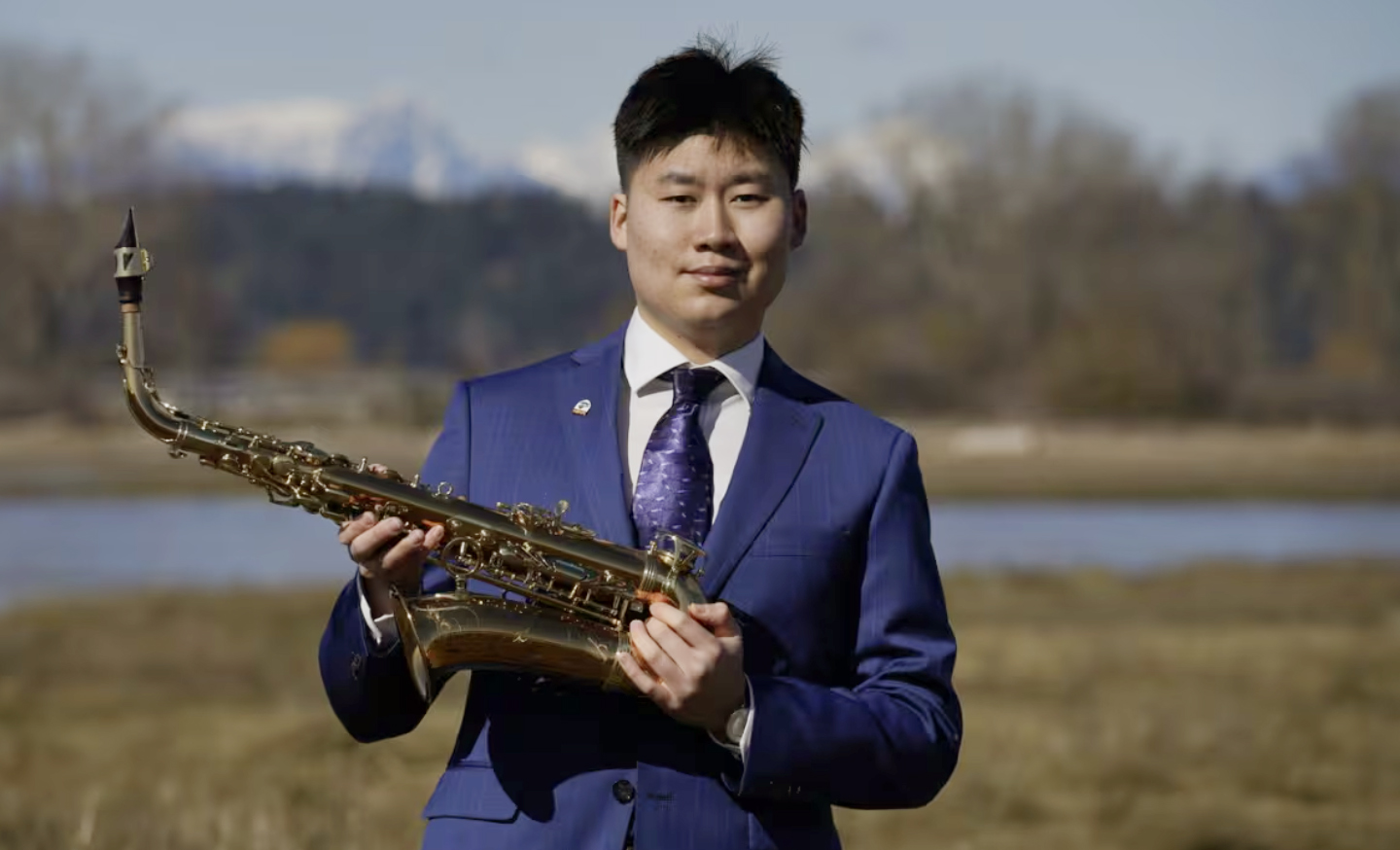Our Playlist column features music curated by School of Music faculty, students, and staff. For the latest column, we invited professor of ethnomusicology Nathan Hesselink and bass trombonist and adjunct professor Sharman King to share some of their favourite tracks recorded in Vancouver. In the Spring 2020 issue of High Notes, they talk about how UBC helped shape music history in the 1980s and ’90s, when the city became an international destination for some of the world’s biggest rock bands.
By Nathan Hesselink and Sharman King
Joani Taylor with The Dave Robbins Orchestra and the Numerality Singers, “With a Little Help (From My Friends)” (1970)
Griffiths-Gibson-Ramsay most likely came together because of this recording, which took place at Aragon Studios at 1234 West 6thAvenue (the premiere studio of the day) over two days in March of 1968. Featuring a virtual “Who’s Who” of the Vancouver commercial music scene, it featured future local jazz great Joani Taylor, UBC music faculty member Dave Robbins and his orchestra (including UBC grads Don Clark on trumpet and Ian McDougall on trombone), and the Numerality Singers, made up of UBC grads Brian Gibson, Brian Griffiths, Doreen Oke, Prof John Swan on trumpet, Sessional Lecturer Jimmy Coombes on bass trombone, and Corlynn Hanney (rounded out by Miles Ramsay).
– Nathan Hesselink
Corky Corcoran, “It Never Entered My Mind” from Corky Corchoran Plays Everywhere (1973)
Nathan’s presentation featured the influence of two UBC faculty members, Professor Cortland Hultberg and Sessional Instructor Dave Robbins. Dave spent years working in Harry James’ band; when his band-mate Corky Corcoran married in 1973 Corky’s new wife gave him the production of this recording as a wedding present. Nathan’s presentation also mentioned Vancouver’s legendary Mushroom Studios where this project was recorded.
– Sharman King
Olivia Newton-John, “Don’t Cry For Me, Argentina,” from Making a Good Thing Better (1973)
In 1976 Della Reese performed at Isy’s Supper Club with her Music Director Peter Meyers. Meyers had been impressed the quality of Vancouver musicians and particularly with the immense power of trombonist Dave Robbins. Later that year Olivia Newton-John was to record the Andrew Lloyd-Weber and Tim Rice hit from Evita; Peter Meyers was the arranger/conductor. Because of immigration issues the project could not be recorded in Los Angeles so Meyers suggested recording in Vancouver. This was recorded at Little Mountain Sound in January 1977. The three male voice chorus is Brian Gibson, Brian Griffiths and Bob Hamper, all products of Professor Hultberg’s Chamber Singers and the horn solo at the end is from UBC grad Brian G’Froerer.
– Sharman King
Pacific Salt, “Raw Toast,” from Pacific Salt (1973)
Pacific Salt was an influential jazz/rock outlet for six Vancouver musicians including UBC graduates Ian MacDougall and Don Clark.
An excellent history of Pacific Salt can be found here.
Three of the six original members of Pacific Salt are Members of the Order of Canada.
– Sharman King
Prism, “Spaceship Superstar,” from Prism (1977)
In many ways this is what got the ball rolling for the emergence of Little Mountain Sound Studios, which was built as the commercial wing of Griffiths-Gibson-Ramsay jingles house. Although the song wasn’t recorded at Little Mountain, it represented the first real hit for producer Bruce Fairbairn, UBC science grad but close friends with many of the university’s music students (the drummer, Jim Vallance, attended UBC briefly). A great song with a lot of humour.
– Nathan Hesselink
Loverboy, “Working for the Weekend,” from Get Lucky (1981)
One of the first albums recorded completely at Little Mountain Sound, it was working with Loverboy that really put producer Bruce Fairbairn on the map and began to attract international attention to Vancouver and the studio. The first album went on to sell more than 1 million copies in Canada alone; this second album did even better, with “Working for the Weekend” representing one of their two best charting songs. This is one of my favourite pop-rock songs of the era.
– Nathan Hesselink
Bryan Adams, “Summer of ’69,” from Reckless (1984)
For me this is the album that many of my Canadian students can’t believe was recorded at Little Mountain. With six singles in the US Billboard top 15, it matched a record set previously only by Michael Jackson’s Thriller and Bruce Springsteen’s Born in the USA. These songs are all classics, though growing up in the American Midwest it was “Summer of ’69” that got me hooked on the music of Bryan Adams. Only much later would I realize that he was Canadian, that his main co-writer was/is Jim Vallance (UBC music attendee), and that he would sink considerable time and financial resources into the local Vancouver music recording scene.
– Nathan Hesselink
Bon Jovi, “Livin’ On a Prayer,” from Slippery When Wet (1986)
This is one of those classic rock anthems that will probably outlive most music composed and heard today. For many a guilty pleasure, Bon Jovi and this song in particular are best enjoyed in large groups with everyone singing their lungs out (something I have experienced and enjoyed a number of times waiting for main acts to take the stage). This is another Bruce Fairbairn production masterpiece, while also featuring the engineering and mixing prowess of Bob Rock, who would go on to produce a number of multi-million selling records himself (such as Metallica below).
– Nathan Hesselink
Aerosmith, “Rag Doll,” from Permanent Vacation (1987)
Now considered the “comeback” album of Aerosmith’s career up to that point, Permanent Vacation was a massive success with numerous hit songs that furthered the legacy of Little Mountain and Bruce Fairbairn. “Rag Doll,” one my favourite Aerosmith songs and one that harkened back to their earlier blues roots, featured UBC music grad Tom Keenlyside who provided the horn arrangements (as well as playing clarinet and tenor sax). Fairbairn and Aerosmith would go on to record the next two monster hits by the band at Little Mountain, Pump (1989) and Get a Grip (1993).
– Nathan Hesselink
Metallica, “Enter Sandman,” from Metallica (1991)
Partly recorded in LA and partly at Little Mountain, this storied album was produced by Fairbairn’s protégé Bob Rock. Also known as The Black Album, it marked a turbulent period for the band internally and in collaboration with Rock. Nevertheless, it became Metallica’s best-selling album with some of their heaviest, most rocking tunes; “Enter Sandman” almost made me switch from the cello to electric guitar.
– Nathan Hesselink


